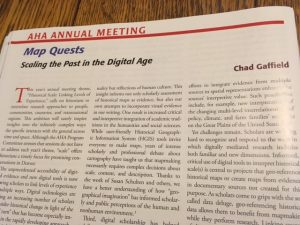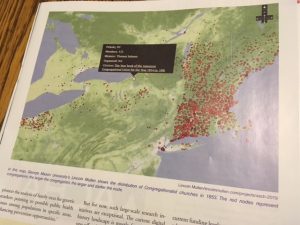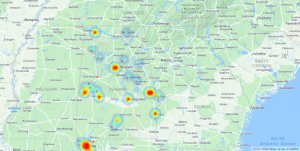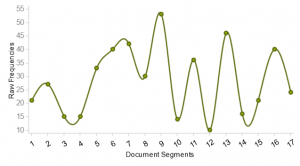Module Four’s main topic was “Collections.” The readings and activities were thoughtful and engaging. Review readings about the many different meanings and definitions related to the concept of an “archive” and metadata were both great reminders of the importance of building content grounded in a clear purpose. Interfaces and collections are also essential elements that must be developed carefully with both short-term and long-term goals in mind. Readings that shed light on these issues and collection /content organization included:
Smithsonian Team Flickr
Generous Interfaces
It’s All About the Stuff
These articles helped me to brainstorm when thinking about nashvillesites.org. For me, the readings in Module Four stressed the solid building blocks needed at the outset of any digital project. This Module’s readings emphasized the need to thoughtfully define, outline, and plan digital history projects with a clear audience, purpose, and goal. In writing and revising two personas I am much more focused on the types of people I hope to engage through my project and this will guide the project’s development going forward. In gathering and posting 15 items and organizing them into a collection via Omeka was done with these factors (audience, data, sources, interface) in mind.
It is important to remember that without a general audience, public history is limited to a small group of creators and scholars. In order to attract a general audience, a digital project must have a compelling narrative. This was the focus of Module Five. As Steven Lubar writes in “Curator Rules,” project creators and managers should also remember that users are “thinking beings.” As a digital humanist creating a digital story, I will need to carefully balance content with curation; information that is as entertaining as it is educational. This can be accomplished through a deliberate and consistent effort to synthesize content and create a narrative interpretation of historical markers in the downtown Nashville area.
As Suzanne Fischer notes in “Developing your Synthetic Powers,” synthesis is key to a successful project that engages a wide audience. Fischer writes, “In your source-gathering, seek patterns. . . read and reach out widely and know your constraints.” Fischer concludes that what is of interest to the historian creating the project is likely of interest to the project’s potential audience. She concludes, “Latch onto what interests you. . . .If you can’t stop thinking about a story you heard, it probably belongs in the project.” In Eavesdropping at the Well, Richard Rabinowitz reminds us that as historians we must move from exhibits to narratives and from narratives to experiences. His and other articles focus on the importance of storyboarding, prototyping, visual/spatial design.
Activities and readings in this module forced me to move beyond the data/content and to consider how best to use the selected interface in a way that can provide a narrative and cross-references to other site features. The ways in which I design and organize the site’s features will be a major part of whether or not this project is a success in terms of 1- attracting and engaging a general audience and 2- providing an exhibit/narrative experience 3- building content that meets scholarly standards.
This is where I have run into a bit of a wall. I have worked to implement the National Mall Theme, developed by our very own Dr. Sharon Leon and initially installed the Exhibit Builder. The box for exhibits was visible and operating fine until last night when I was adding my last item. I’ve uninstalled and reinstalled, tried different versions, and nothing is working. I’m perplexed because it was there, and it seems as if there was a problem it would not have installed and shown on the homepage to begin with. I really like the theme and layout and want to keep it, so I hope I can find a work around. I don’t have the technical skills to rebuild the custom theme in Omeka 3.0. I wonder if I could just revert to an older version of Omeka? I hope I can figure this out by March 20 when the activity for building an exhibit is due.



